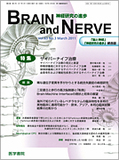Japanese
English
- 有料閲覧
- Abstract 文献概要
- 1ページ目 Look Inside
- 参考文献 Reference
はじめに
厚生労働省の患者調査1)によると,2005年の本邦におけるParkinson病(Parkinson disease:PD)有病者数は約145,000人,PDの有病率は人口10万人あたり約130人と考えられる。PDは中年以降の発症が多く,加齢に伴い発症率や有病率が増加2)するため,高齢化社会を迎える本邦では,今後有病者数の増加が予想される。近年,PDの治療法は著しい進歩を遂げ,生命予後は比較的良好となった3)。また近年,治療ガイドライン・アルゴリズムも編纂され4),治療法の普遍化も図られている。このような状況で現在本邦で行われている治療レベルが患者にとって十分に満足いくものかどうかについては,大いに関心がある。
PD治療の主軸は,レボドパを中心とした5)薬物によるドパミン補充療法であるが,従来から本邦でのレボドパの1日量は欧米と比べて少ないことが指摘されている6)。われわれはこの事実を確認し,それが患者満足度にどのように影響しているかを把握する目的で,大規模患者調査を実施した。
Abstract
Parkinson's disease (PD) affects 145,000 people in Japan. Most of these patients are treated with levodopa in combination with other anti-PD therapies. In order to maximize efficacy and patient satisfaction, this survey was conducted to investigate patients' perspective of current PD management in Japan. This survey was conducted in 2008 by questionnaire (3,935) and interview (407). The majority of responders were members of the Japan PD Association. Severity of PD, medication, impact of wearing-off, and patients' attitudes to therapy were assessed. Most patients (95%) were on levodopa, with an average dose of 370 mg/day. Although dose increased with duration of treatment, the majority of patients remained within 300-400mg/day. Patients with wearing-off were less satisfied with their therapy than those without wearing-off (36 vs 49%). Most patients are less concerned by mild dyskinesias. Hallucination is the most distressing side effect. For patients preferring mobility over dyskinesia, levodopa should be dosed sufficiently, and possibly titrated, to maximize clinical benefit and patient satisfaction.
(Received: July 12,2010,Accepted: October 2,2010)

Copyright © 2011, Igaku-Shoin Ltd. All rights reserved.


